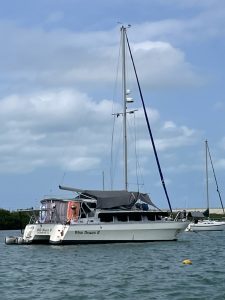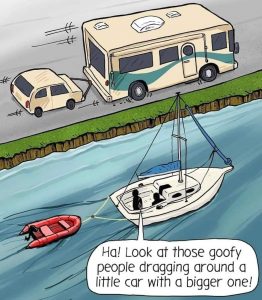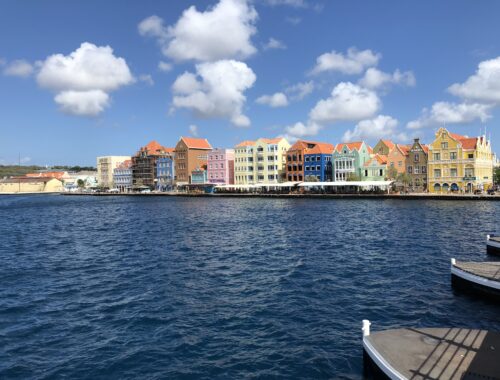BS4 03 – Lessons
What living on a boat for (almost) 3 years has taught me.

The first thing I learned was that liveaboards are (mostly) all family. We may not know each other or even have to see each other, to help each other out – but we do. Need advice on an anchorage? Need help with an engine issue? Maybe you need to go up your mast and need someone to haul you up and spot you? How about when you’re new to an area and you need to issue a radio check to ensure your radio is receiving and transmitting okay? Simply reach out, and ask! The community is usually pretty helpful and new friends are almost always welcome.
And that was the second thing I learned, that we will make a bunch of new friends, everywhere we go. Even more interestingly, we also continue to make new friends, almost consistently regardless of where we are. In the past 6 months we have been in Boot Key Harbor, in Marathon FL, and I can’t even possibly try to count all of the new friends we’ve made in that time. I just can’t. Maybe, 200? Too high? Too low? I have no idea. I know it must be more than 150 and that’s where it all goes foggy, but then we are in a high transient traffic area, especially during the season.
Weather, and storms, hit differently when you live on the water. Lightening and thunder alone can be extremely frightening when you’re inside a sturdy structure on land, just imagine the sound, and feel of it on the water! Wind and waves added in, intensified in strength depending on the nature of the storm, and the energy of it pulses through your boat. If you are tethered somewhere, you worry about that tethering, whether it be a chain, or some cable, or even a few ropes, and how well they’ll hold. And that’s just the storms. Don’t even get me started on the heat or the cold!
Time also passes strangely on the water. Maybe it’s the environment, or even possibly also the surroundings, but there does seem to be an effect on the passage of time. On a dock in a marina, on a mooring ball, anchored in an anchorage, every place is different, and each spot holds an experience unique to itself. Not surprisingly, the longer you occupy an area and become more familiar with your surroundings, the more at ease you feel, but you must remember that not everywhere, is home.
Home (to me) is a special place, and seemingly one that I’ve not really found yet. I know that came out oddly, I did own a house which I lived in for 22+ years and that was the definition of home on land to me at the time, but now things have changed and that structure no longer meets the criteria. Right now, I’m not sure where I want to be, but I’m pretty positive I’ll know it when I find it. Currently we’re pretty set up here in Marathon, but we know that the situation is meant to be temporary, at best. We are still planning to explore.

Wind Dragon II, is our current home on the water, in which we travel. Traveling with your house is strange at first, and it can take a bit of getting used to, but once you do it is oh so worth it! There are several hurdles which must be overcome to make your living spaces travel worthy, the first and foremost rule of which is to not own a lot of stuff, which is also the hardest rule. If you must, you can own it, but you can’t carry it with you. And everything you do have on the vehicle with you, is what you need to live with. Clothing, items for cleanliness, food, equipment, utensils, and we have a few extra things which we carry: carts, sewing machines, sewing materials and equipment, beach items, spare parts, etc. etc., and so on.
We do have a few fun things all around which decorate our boat, which oddly enough tell of our travels throughout our years, stickers, magnets, shot glasses, little souvenirs from our journeys both domestic and abroad. I learned that when I emptied the house. Our travels held so many more memories for us than our possessions did, and most of those possessions are now gone. In our head (half bath) here on the boat I hung a hand painted tile which I watched being made in Cozumel Mexico during a trip with a large group of close friends. It’s beautiful, it fits the décor and atmosphere perfectly, and it holds terrific memories. These are the important things.
Being self-sufficient is key to this adventure. In saying that, I do not mean to say you can’t or don’t work or earn, what I mean is that you do not have to be tied to a dock. You can hook to a mooring, or even anchor out for days on end. That is very important. We are completely, 100% self-sufficient. We make our own energy, recharging our batteries using solar, and we have a water maker which desalinates water for us every few days. We have back ups of course, we recently purchased a generator which we use at night for air conditioning now that the temperatures are so high, and we have two high output alternators on the engines which we can run to recharge when necessary.
Going along with the previous paragraph I should add that self control, or self monitoring is another key issue to learn. Monitor your use of water. Showers, doing dishes, brushing your teeth, all these things add up. And your black water? The used water, where does it drain to? How big is the tank that holds it? Does it need monitoring? Think the same about all of your systems, septic, and so on. Where and when do they discharge, or need to be discharged? Regular boat maintenance is another key factor which is an absolute must and needs the utmost consideration.
So all of that being said, I’ve learned that living on a boat, traveling, working on it, and just getting through in general, although not easy by any means, is absolutely lovely on most days, a terror on some days, and most importantly thoroughly satisfying all of the time. I honestly wouldn’t have it any other way. We love living aboard our tiny home, and we love the adventurous life we are so very privileged to live, within the wonderful community we have become a part of. We are proud to be here.
Until next time everyone, fair winds!



